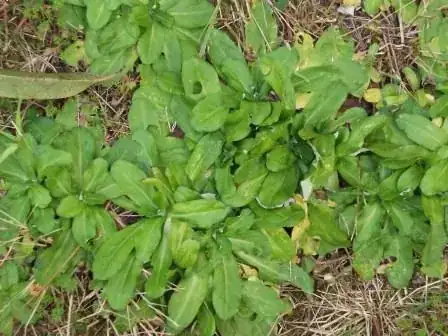I've tried looking but I can't seem to find the name of these weeds (in Australia):

The leaves don't grow any larger than in the photo. It is vine-type and can spread for metres. Vine-root stuff is is just below the surface. Gets a small red flower.

The weeds always grow in a clump. They don't get any larger than they are but spread like the plague and kill any grass it covers.
Anyone have any idea what they are?